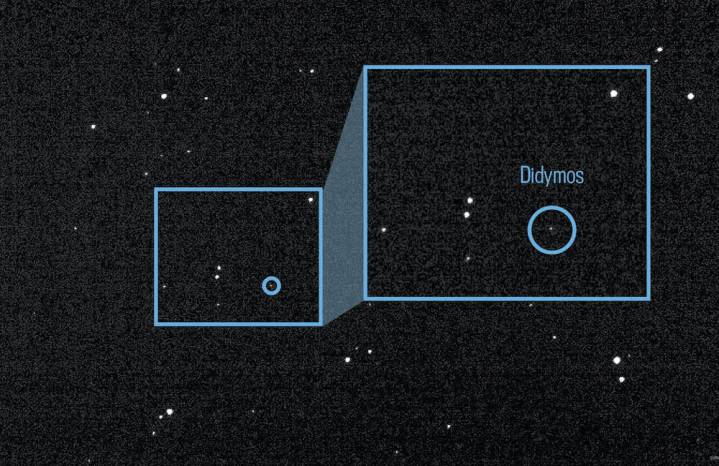NASA’s Double Asteroid Redirection Test (DART) spacecraft has caught its first glimpse of the asteroid that it’s set to slam into on September 26.
The Dimorphos asteroid poses no threat to Earth, but NASA wants to find out if it can change an asteroid’s flight path by crashing a spacecraft into it so that it can protect our planet from hazardous space rocks in the future.
The image (below) — captured by DART’s Didymos Reconnaissance and Asteroid Camera (DRACO) in July and released by NASA this week — shows Didymos, the double-asteroid system that includes the spacecraft’s target, Dimorphos (inside the left circle), about 20 million miles from DART.

The image actually comprises 243 separate captures and shows the light from the asteroid Didymos and its orbiting moonlet Dimorphos.
NASA said its team wasn’t sure if DRACO would be able to spot the asteroid yet, but after stitching together the numerous images it was able to enhance the final picture and pinpoint Didymos.
DRACO is a key part of DART — indeed it’s the only instrument the spacecraft is carrying — as its data will be used to guide the spacecraft toward the asteroid, especially in the final four hours prior to impact when DART will be required to navigate by itself.
“This first set of images is being used as a test to prove our imaging techniques,” Elena Adams, DART mission systems engineer at the Johns Hopkins Applied Physics Laboratory, said in a release. “The quality of the image is similar to what we could obtain from ground-based telescopes, but it is important to show that DRACO is working properly and can see its target to make any adjustments needed before we begin using the images to guide the spacecraft into the asteroid autonomously.”
After making a number of trajectory correction maneuvers over the next three weeks, the team is confident that 24 hours prior to hitting the asteroid, it will know the impact point to within a distance of 1.2 miles (2 kilometers).
Scientists have calculated that Earth is at most risk from asteroids greater than 460 feet (140 meters) in size. There are plenty of asteroids out there that have yet to be discovered by astronomers, so a successful test in just a few weeks’ time could prove vital for our planet’s safety.


